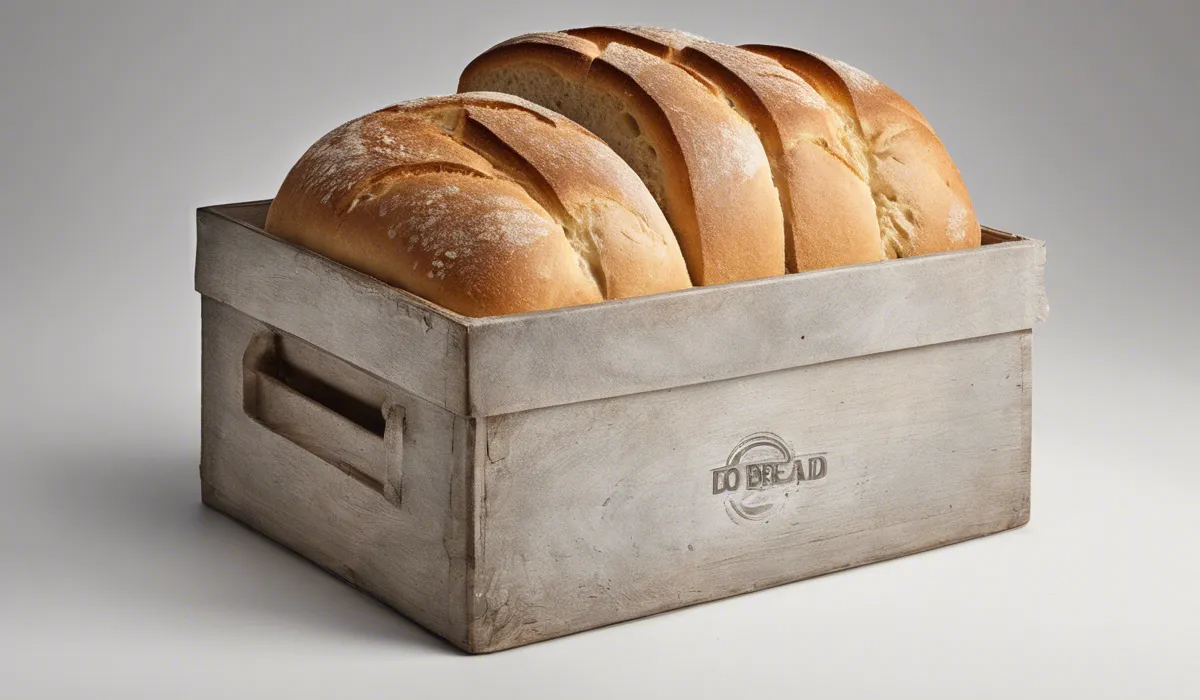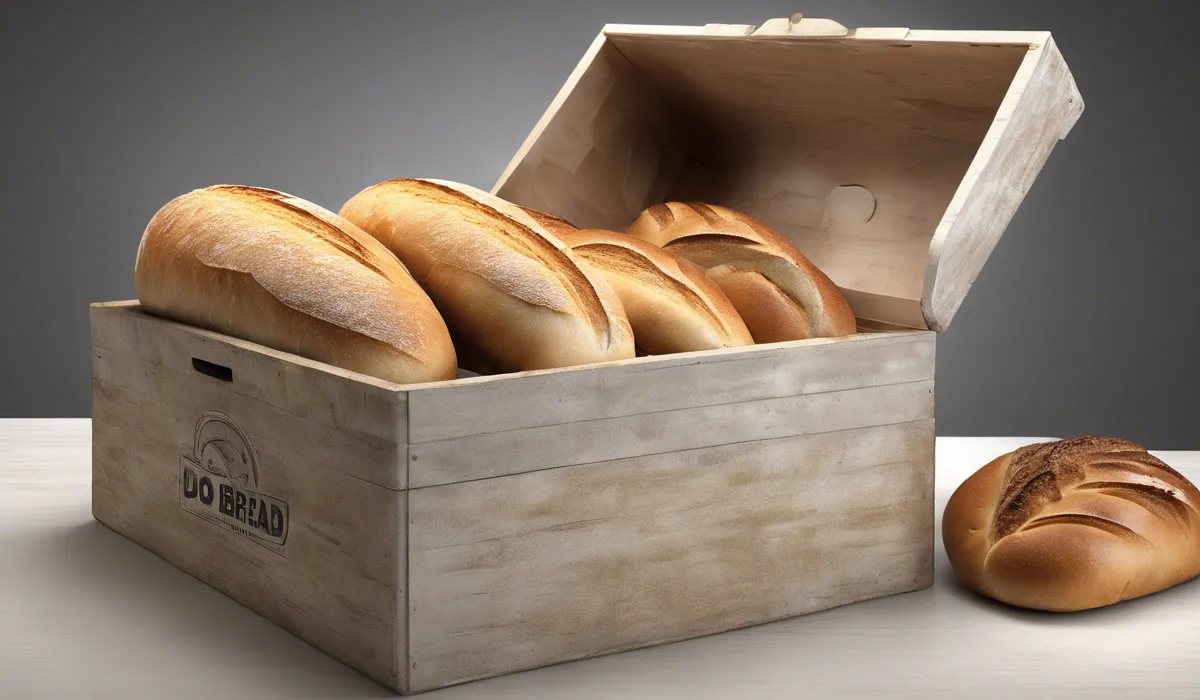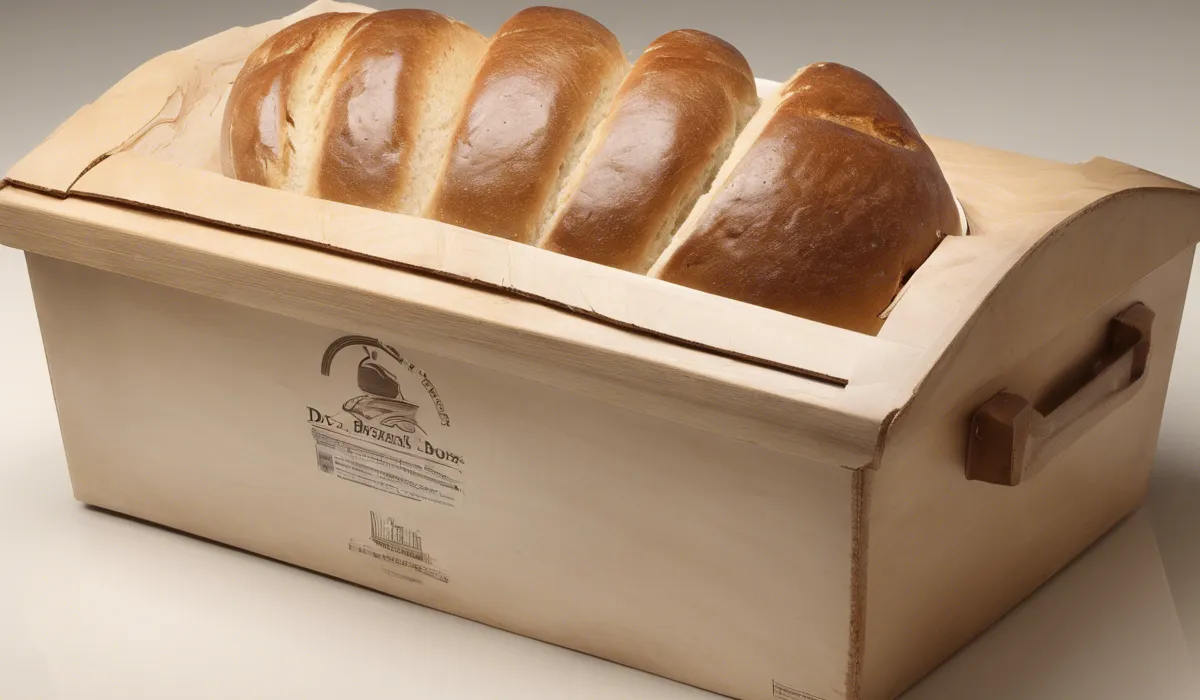Bread boxes can slow mold growth by maintaining a balance between humidity and air circulation, which keeps bread fresh longer. However, they do not completely prevent mold, as spores are ubiquitous and can thrive in any environment given time.
Science Behind Mold Growth on Bread

Understanding Mold
Mold is a type of fungus that can grow almost anywhere. It starts as tiny spores that float in the air.
When these spores land on a surface with the right conditions, they start to grow. Mold looks like tiny spots and can be many different colors.
These tiny spots can spread quickly over food like bread if not stopped.
Conditions for Mold Growth
Mold needs several things to grow: moisture, warmth, and food. Moisture can come from the air or from the food itself.
Warmth helps mold to grow faster, and food gives mold the nutrients it needs. Places that are often wet and warm, like kitchens, are good homes for mold.
Bread as a Mold Haven
Bread is an ideal food for mold because it is soft and full of nutrients. It often has a little moisture too.
When we leave bread out in the open, it can get moldy because the air around it might be warm and moist. Bread can become a small garden for mold if we do not keep it safe.
The Role of Bread Boxes in Mold Prevention

Bread Box Design Essentials
A bread box is a special home for bread. It is usually made of wood, metal, or plastic and has a door or lid.
The design of a bread box helps to keep the air around the bread just right – not too dry and not too wet. This helps the bread stay fresh and slows down mold growth.
Regulating Airflow and Humidity
Bread boxes have small holes or gaps to let air move in and out. This airflow stops the air inside from getting too moist, which would help mold grow.
The box also keeps the bread from getting too dry and hard. By balancing the air, the bread box makes it harder for mold to grow.
Comparing Storage Methods
There are different ways to store bread. Some people put bread in plastic bags, but these can trap moisture and make mold grow faster.
Others put bread in the refrigerator, which can slow mold but might make the bread dry and stale. A bread box is a good choice because it keeps the bread just right – not too moist and not too dry.
Best Practices for Using Bread Boxes

Optimizing Your Bread Box Environment
To keep your bread fresh in a bread box, do not put too much bread inside. Too much bread can block the air from moving around.
Make sure the bread is not wet when you put it in and try to use the bread in a few days. This helps stop mold from having a chance to grow.
Cleaning Your Bread Box
It is important to clean your bread box often. Crumbs and bits of bread can be food for mold.
Wipe the inside of the box with a clean cloth and dry it well. If you see any mold, clean it right away so it does not spread. A clean bread box is a safe place for bread.
Extra Steps for Freshness
There are more things you can do to keep bread fresh. Choose bread with natural preservatives, like vinegar, that help stop mold.
Do not touch the bread with wet hands, and if you see a little mold, throw that piece away quickly. By being careful, you can enjoy fresh bread for longer.
FAQs About Bread Box Mold Prevention
Do bread boxes completely prevent mold on bread?
No, bread boxes do not completely prevent mold, but they can slow mold growth by maintaining a balance between humidity and air circulation.
Can a bread box extend the freshness of bread?
Yes, a bread box can extend the freshness of bread by slowing down the staling process and mold growth.
Are bread boxes airtight?
No, bread boxes are not airtight. They are designed to balance humidity and air circulation to keep bread fresh.
How does a bread box prevent mold?
A bread box prevents mold by providing a controlled environment that reduces moisture build-up and promotes sufficient air circulation.
How often should bread be checked for mold in a bread box?
Bread should be checked regularly, at least once every few days, for signs of mold, even when stored in a bread box.
Final Thoughts
Bread boxes are effective in delaying mold growth on bread by optimizing humidity and airflow, thus prolonging freshness.
They are not foolproof, however, as mold spores are widespread and can eventually grow in most settings if given sufficient time.
